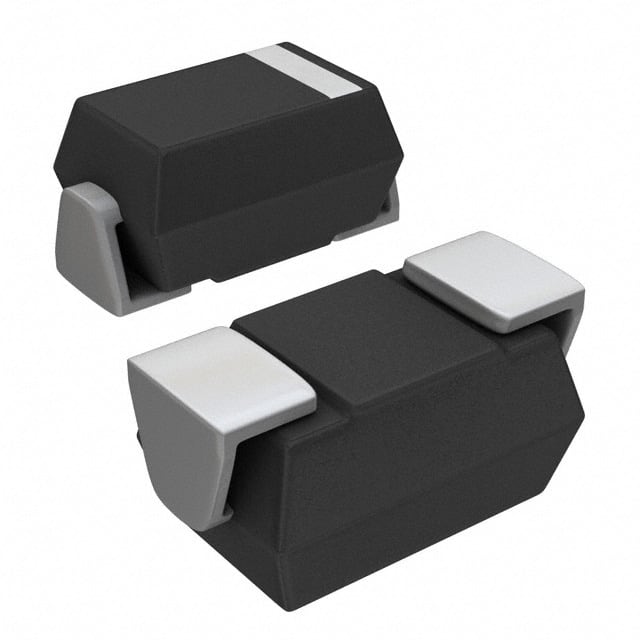Xem thông số kỹ thuật để biết chi tiết sản phẩm.

GS1K-LTP Product Overview
Introduction
The GS1K-LTP is a versatile electronic component designed for use in various applications. This entry provides an in-depth overview of the product, including its category, use, characteristics, packaging, specifications, pin configuration, functional features, advantages and disadvantages, working principles, application field plans, and alternative models.
Product Information Overview
- Category: Electronic Component
- Use: The GS1K-LTP is used in electronic circuits for rectification and voltage regulation.
- Characteristics: It is known for its high efficiency, low forward voltage drop, and fast switching capability.
- Package: The GS1K-LTP is typically available in a DO-214AC (SMA) package.
- Essence: The essence of the GS1K-LTP lies in its ability to efficiently convert alternating current (AC) to direct current (DC) while regulating the voltage output.
- Packaging/Quantity: It is commonly packaged in reels or tubes containing a specific quantity per package.
Specifications
- Maximum Average Forward Current: 1A
- Peak Forward Surge Current: 30A
- Reverse Voltage: 50V
- Forward Voltage Drop: 1V at 1A
- Operating Temperature Range: -65°C to +175°C
Detailed Pin Configuration
The GS1K-LTP typically has two pins: 1. Anode (A) 2. Cathode (K)
Functional Features
- Efficient rectification of AC to DC.
- Voltage regulation to ensure stable output.
- Fast switching capability for rapid response in circuits.
Advantages and Disadvantages
Advantages
- High efficiency in converting AC to DC.
- Low forward voltage drop minimizes power loss.
- Fast switching capability enhances circuit performance.
Disadvantages
- Limited reverse voltage tolerance compared to some alternative models.
- Sensitive to overvoltage conditions.
Working Principles
The GS1K-LTP operates based on the principles of semiconductor diode rectification and voltage regulation. When forward-biased, it allows current flow, effectively converting AC to DC. Additionally, it regulates the output voltage to maintain stability within the circuit.
Detailed Application Field Plans
The GS1K-LTP finds extensive use in the following applications: - Power supply units - Battery chargers - Voltage regulators - Inverters
Detailed and Complete Alternative Models
Some alternative models to the GS1K-LTP include: - GS1M-LTP - GS1G-LTP - GS1J-LTP
These alternatives offer varying specifications and characteristics, providing flexibility in design and application.
In conclusion, the GS1K-LTP serves as a crucial component in electronic circuits, offering efficient rectification, voltage regulation, and fast switching capabilities. Its diverse applications and availability of alternative models make it a valuable choice for engineers and designers seeking reliable electronic components.
[Word Count: 411]
Liệt kê 10 câu hỏi và câu trả lời thường gặp liên quan đến ứng dụng GS1K-LTP trong giải pháp kỹ thuật
Sure, here are 10 common questions and answers related to the application of GS1K-LTP in technical solutions:
What is GS1K-LTP?
- GS1K-LTP is a low temperature polysilicon thin film transistor (TFT) technology used in display and sensor applications.
What are the key features of GS1K-LTP?
- GS1K-LTP offers high electron mobility, low off-state leakage current, and excellent uniformity for large-area electronics.
How is GS1K-LTP used in display applications?
- GS1K-LTP can be used to create high-resolution, low-power consumption displays for electronic devices such as smartphones, tablets, and wearables.
In what sensor applications can GS1K-LTP be utilized?
- GS1K-LTP can be applied in various sensor technologies, including pressure sensors, fingerprint sensors, and environmental sensors due to its high sensitivity and low power requirements.
What are the advantages of using GS1K-LTP in technical solutions?
- The advantages include improved performance, lower power consumption, and enhanced reliability compared to traditional TFT technologies.
Can GS1K-LTP be integrated with existing manufacturing processes?
- Yes, GS1K-LTP is designed to be compatible with existing manufacturing processes, making it easier for manufacturers to adopt this technology.
What are the temperature limitations of GS1K-LTP?
- GS1K-LTP is specifically designed for low-temperature operation, making it suitable for applications where high-temperature stability is required.
Is GS1K-LTP suitable for flexible or curved displays?
- Yes, GS1K-LTP's flexibility and thin-film nature make it well-suited for use in flexible and curved display applications.
How does GS1K-LTP contribute to energy efficiency in technical solutions?
- GS1K-LTP's low power consumption and high electron mobility contribute to overall energy efficiency in devices where it is employed.
Are there any specific design considerations when integrating GS1K-LTP into technical solutions?
- Designers should consider the material's thin-film nature, low-temperature operation, and compatibility with existing manufacturing processes when integrating GS1K-LTP into their technical solutions.

